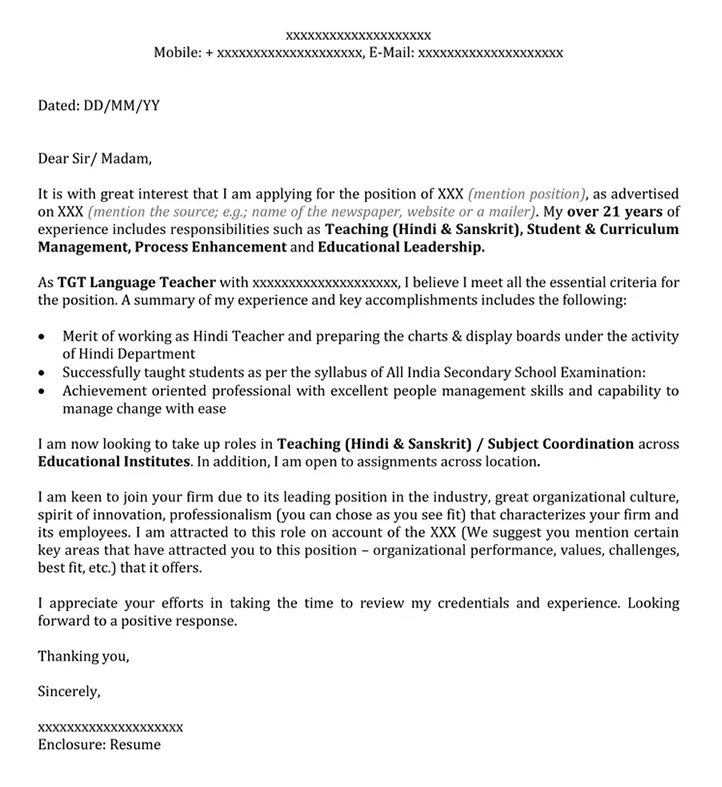What Is a Teaching Abroad Cover Letter
A teaching abroad cover letter is your first introduction to a potential employer and can significantly influence whether you secure an interview for an international teaching position. It serves as more than just a formality; it’s your opportunity to showcase your qualifications, experience, and personality in a compelling way. Unlike a resume, which provides a factual account of your background, your cover letter allows you to elaborate on your skills, explain your motivations, and demonstrate why you are the perfect fit for the specific role and school. It’s your chance to connect with the hiring manager on a personal level, highlighting your passion for teaching and your eagerness to embrace a new cultural experience. A well-crafted cover letter can set you apart from other applicants and increase your chances of landing your dream teaching job abroad. Consider it your personal marketing document, designed to persuade and entice the reader to learn more about you.
Key Components of a Cover Letter
A strong cover letter includes several key components that work together to create a positive impression. Each section should be carefully crafted to highlight relevant information and capture the hiring manager’s attention. Structure your letter thoughtfully, ensuring a logical flow that presents you in the best possible light. This means carefully considering what information to include and how to arrange it to maximize impact. Remember to tailor each cover letter to the specific job and school, as this demonstrates your genuine interest and understanding of their needs. The more personalized the letter, the more effectively it will communicate your suitability for the position.
Your Contact Information and the Date
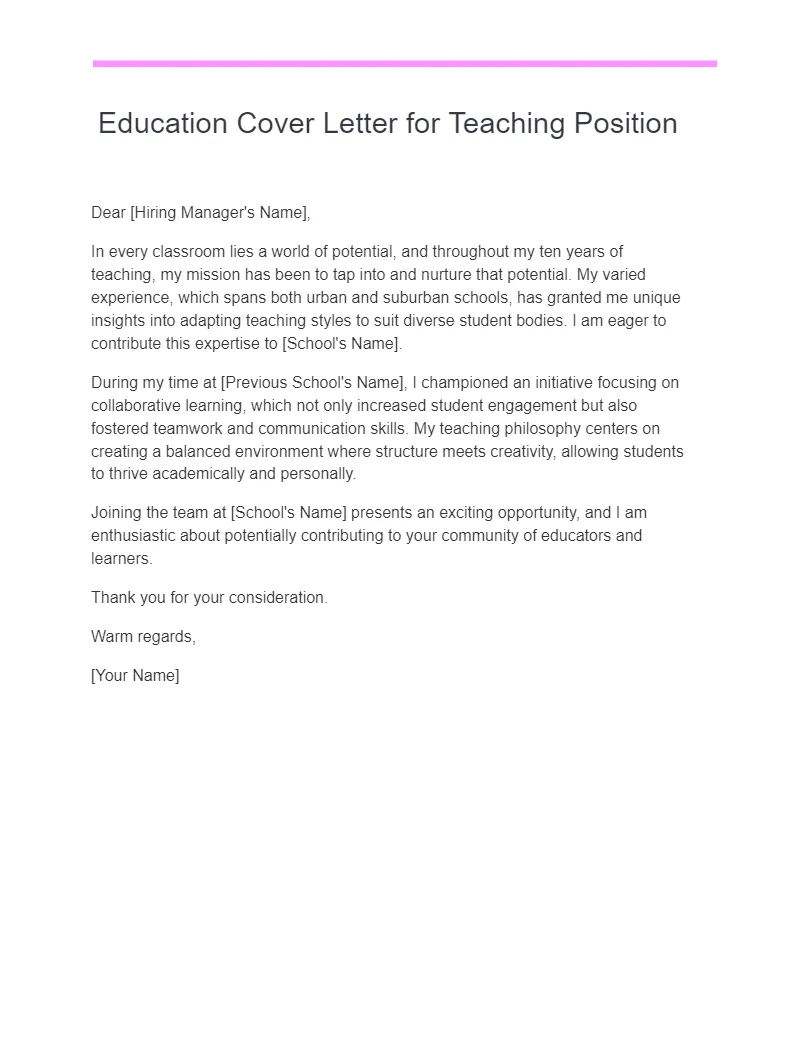
Start with your contact information at the top of the letter. Include your name, address, phone number, and professional email address. Ensure that your email address is appropriate and professional; avoid using nicknames or unprofessional handles. Following your contact information, add the date of the letter. This establishes when the letter was written and helps with record-keeping. Proper formatting ensures that you appear organized and detail-oriented, crucial qualities for a teacher.
The Hiring Manager’s Information
If possible, address your cover letter to a specific person, such as the hiring manager or school principal. Research the school’s website or LinkedIn to find the correct name and title. Addressing the letter to a specific person demonstrates that you have taken the time to research the position and school, showing initiative and attention to detail. If you are unable to find a specific name, use a general salutation such as “Dear Hiring Manager” or “Dear [School Name] Hiring Committee.” Always make sure to spell the name correctly; this small detail can make a big difference in creating a positive impression. The hiring manager’s information should include their name, title, and the school’s address.
A Compelling Opening Paragraph
Your opening paragraph should grab the reader’s attention immediately. State the position you are applying for and how you learned about it. Briefly mention why you are excited about the opportunity and why you believe you are a good fit. The best opening paragraphs are concise, enthusiastic, and tailored to the specific school. Avoid generic statements; instead, try to inject some personality and demonstrate your genuine interest in the school. For instance, if you are familiar with the school’s mission or programs, reference them to show that you’ve done your homework. The goal is to make the hiring manager want to read more.
Highlighting Your Skills and Experience
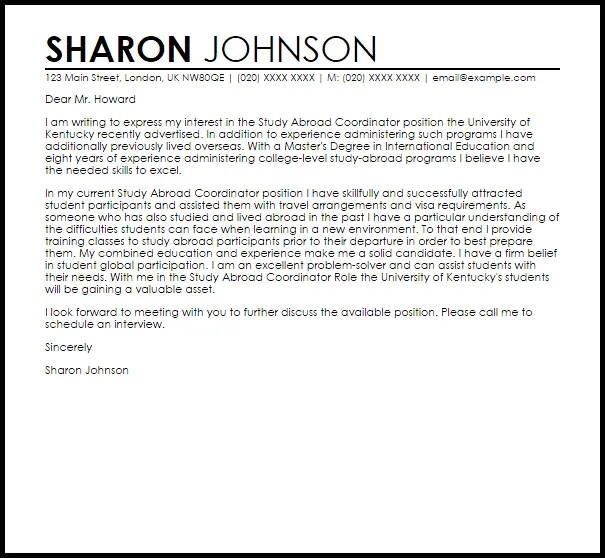
The main body of your cover letter should highlight your relevant skills and experience. Focus on the qualifications that align with the job description. Provide specific examples of your accomplishments, such as successful teaching methods, student achievement, and contributions to school communities. Use action verbs to describe your responsibilities and achievements. For instance, instead of writing “Responsible for teaching math,” write “Developed and implemented engaging math lessons that improved student test scores by 15%.” Make sure that your experience is relevant and supports your claim that you are an ideal candidate for the position. Back up each claim with concrete evidence that demonstrates your capabilities.
Addressing Specific Requirements
Many teaching positions abroad have specific requirements, such as certifications, degrees, or experience with certain curricula. Directly address these requirements in your cover letter. Clearly state how you meet each requirement. If the job posting asks for experience with the International Baccalaureate (IB) program, provide details about your IB experience, including the grades you taught and any training you have completed. This demonstrates your attention to detail and ability to follow instructions. Addressing specific requirements shows the employer that you understand the role and are ready to take on the challenges. Failing to address these specific requirements can quickly disqualify your application.
Quantifying Your Accomplishments
Whenever possible, quantify your accomplishments to demonstrate your impact. Use numbers, percentages, and specific data to showcase your successes. For example, instead of saying “Improved student engagement,” say “Increased student engagement by 20% through the implementation of project-based learning.” Quantifying your accomplishments adds credibility to your claims and provides concrete evidence of your skills. Highlighting your achievements with measurable results proves that you can make a tangible difference in a school setting. This also sets you apart from candidates who provide only general statements about their qualifications.
Demonstrating Cultural Sensitivity
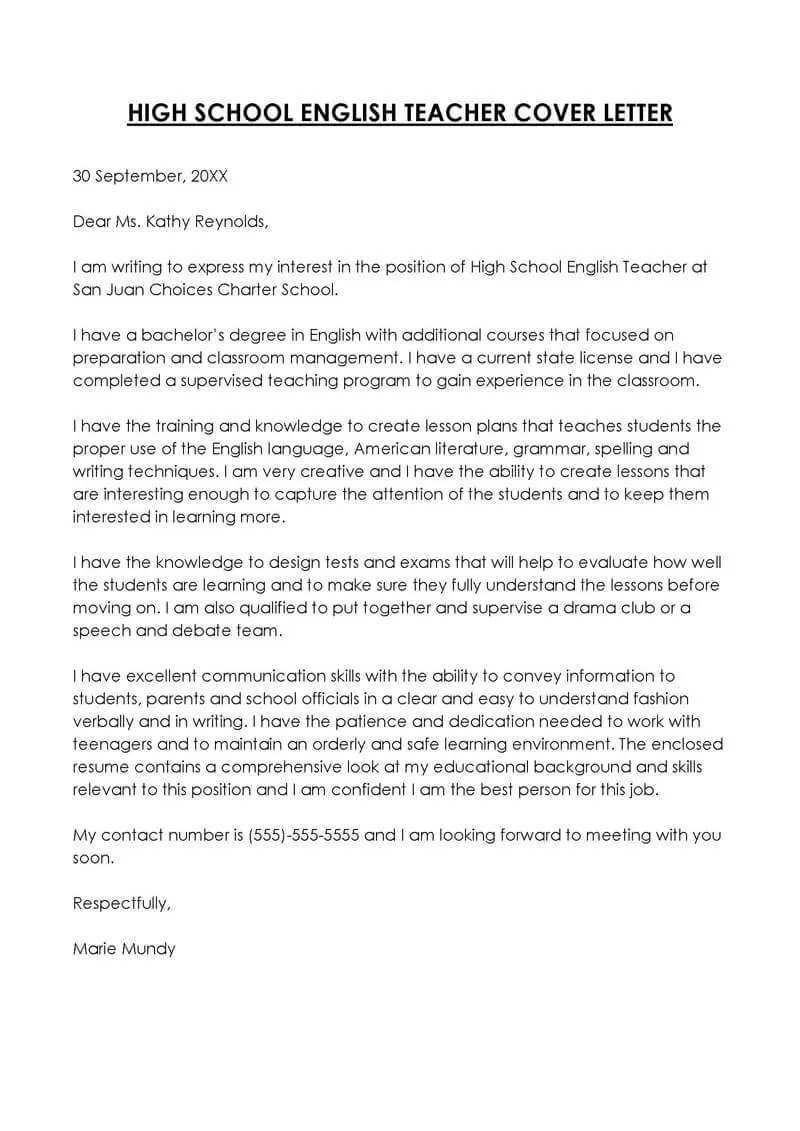
Teaching abroad requires a high degree of cultural sensitivity. In your cover letter, demonstrate your understanding of and respect for different cultures. Mention any international experience you have, such as travel, language study, or volunteer work. Explain how you plan to adapt to a new cultural environment and support your students from diverse backgrounds. Emphasize your willingness to learn about the local culture, and how you are open to new experiences. This might involve discussing your efforts to learn the local language or your interest in participating in community events. Being culturally sensitive is an essential quality for any teacher working abroad.
Expressing Your Enthusiasm
Let your enthusiasm for the opportunity shine through. Explain why you are interested in teaching abroad and why you are drawn to this specific school. Demonstrate your passion for education and your commitment to making a positive impact on students’ lives. The hiring managers are looking for people who are passionate about teaching and the school’s mission. Show them you have done your homework by referring to the school’s website, mission statement, and values. Showing genuine enthusiasm makes your application more memorable and more likely to be chosen. Expressing your enthusiasm separates you from candidates who might view the position as just a job.
Professional Closing and Call to Action
Your closing paragraph should reiterate your interest in the position and thank the hiring manager for their time and consideration. Include a clear call to action, such as “I look forward to the opportunity to discuss my qualifications further” or “Thank you for considering my application; I am available for an interview at your earliest convenience.” The closing should be professional, polite, and enthusiastic. End with a professional closing, such as “Sincerely” or “Respectfully,” followed by your typed name. Provide your contact information again so that the hiring manager can easily reach you.
Proofreading and Formatting Your Letter
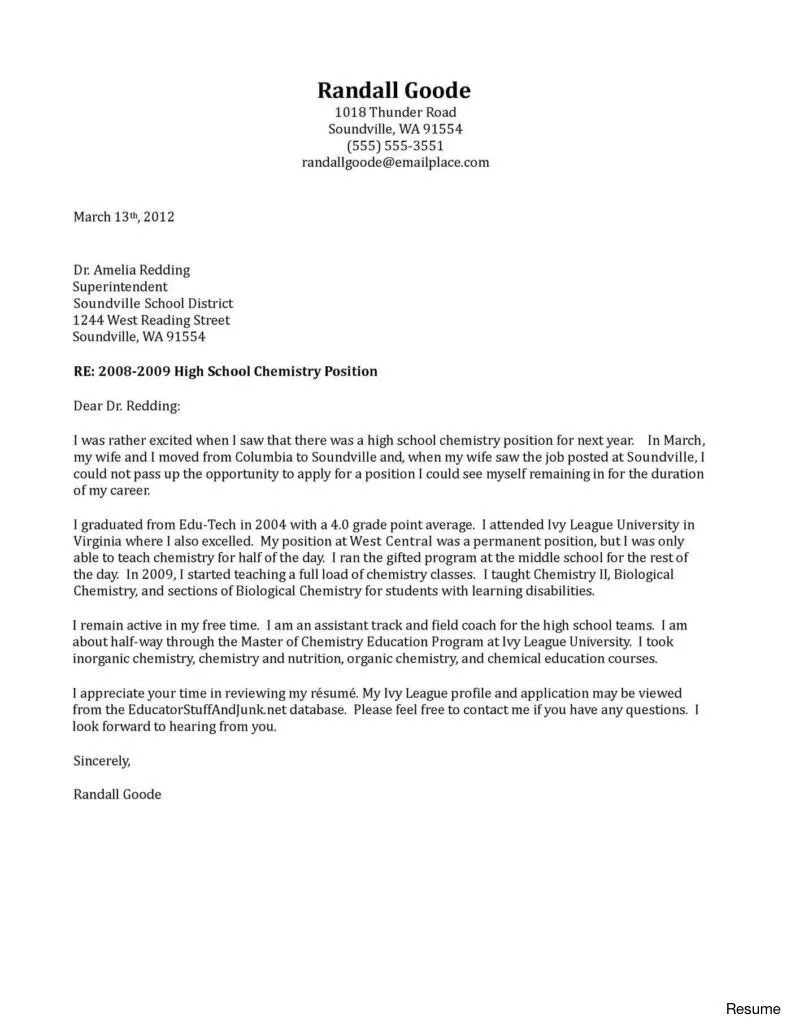
Before submitting your cover letter, it is crucial to proofread and format it carefully. Errors can undermine your credibility and make a negative impression on the hiring manager. Proofreading shows that you pay attention to details and are committed to presenting yourself professionally. Good formatting makes your letter easy to read and visually appealing. Ensure that your cover letter looks polished and professional; it is just as important as what you write. Always check the layout, font, and spacing, making sure that they are consistent and easy on the eyes. Well-formatted and error-free cover letter is a testament to your professionalism.
Formatting Tips
Use a professional font, such as Times New Roman, Arial, or Calibri, and a font size between 10 and 12 points. Ensure your letter is single-spaced with a double space between paragraphs. Use left alignment, and avoid centering the entire text. Use a standard margin of 1 inch on all sides. Keep the letter to one page unless specifically requested otherwise. Ensure that there is enough white space on the page; this makes the letter easier to read. Good formatting contributes to readability and ensures your letter is easy on the eyes. Use bolding or italics sparingly for emphasis.
Proofreading Checklist
Proofread your cover letter multiple times, checking for any errors in grammar, spelling, and punctuation. Use a grammar checker, but don’t rely on it completely. Read the letter aloud to catch any awkward phrasing or sentences. Ask a friend, colleague, or mentor to review your cover letter. Ensure that the letter aligns with your resume and there is no conflicting information. Make sure that all the contact details are correct. Double-check all names, titles, and addresses. A mistake-free cover letter leaves a strong, professional impression.
Examples and Templates for Your Cover Letter
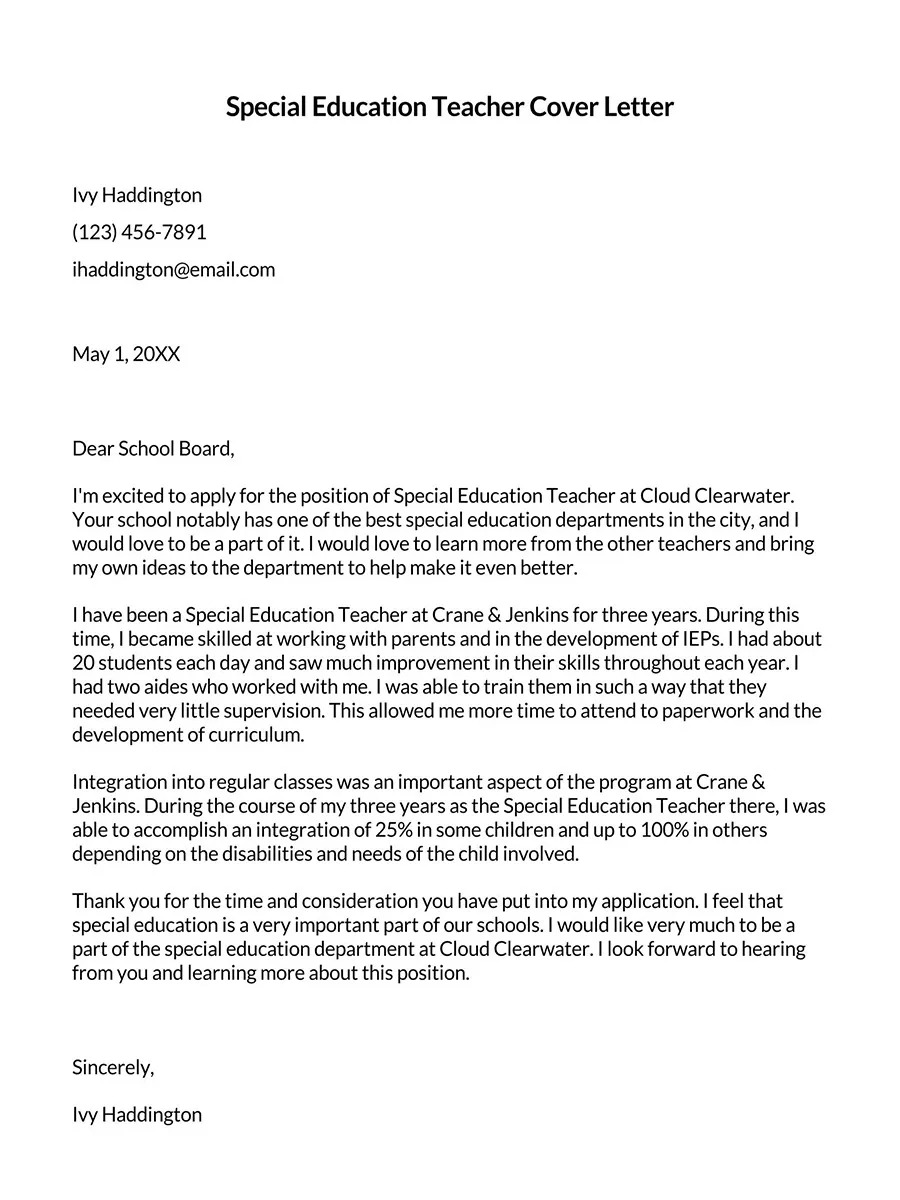
Use cover letter examples and templates as a starting point. These resources can provide guidance on structure, content, and tone. However, customize the examples and templates to reflect your unique experience and the specific requirements of the job. Do not simply copy and paste a template. Tailor the language and content to align with your skills, experiences, and the needs of the school. Remember to replace the generic information with details specific to the position you are applying for. This personal touch will show that you have given careful consideration to the application.
Adaptations for Different Countries
The expectations for cover letters may vary depending on the country. Research the cultural norms for job applications in the country where you are applying. Some countries may have specific requirements or preferences for format, content, or length. Tailor your letter to meet these requirements. Some cultures may place a higher value on formality or personal connections. If possible, learn about the expectations of the school you are applying to. Knowing the local customs demonstrates cultural sensitivity and professionalism.
Common Mistakes to Avoid
Avoiding common mistakes can significantly improve the quality of your cover letter. Poorly written cover letters can harm your chances. Making sure you avoid these mistakes allows you to put your best foot forward and make a positive impression on the hiring manager.
Generic Language and Lack of Personalization
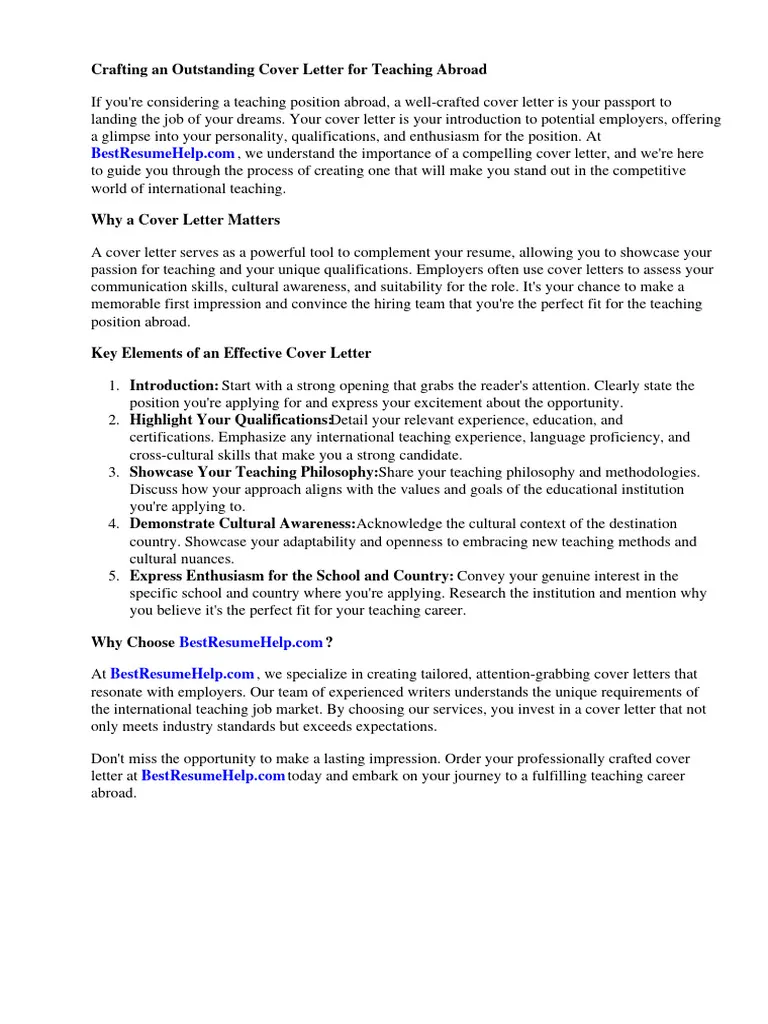
Avoid using generic language and a lack of personalization. These can make your application seem insincere and impersonal. Avoid using phrases like “To whom it may concern” unless you cannot find a specific name. Use the school’s name and mission statement in your letter. Avoid using generic descriptions of your skills and experiences. Instead, use specific examples and quantify your achievements. Generic language can create the impression that you’ve sent the same cover letter to multiple schools. Tailor your cover letter to each application.
Focusing Too Much on Yourself
While it’s important to highlight your skills and experience, avoid focusing too much on yourself. Instead, focus on how you can contribute to the school and the students. Relate your experience to the school’s needs. Frame your achievements in terms of the benefits for the school and the students. Show that you understand the school’s needs and are prepared to make a positive impact.
Grammatical Errors and Typos
Grammatical errors and typos can undermine your credibility. These errors suggest a lack of attention to detail and can create a negative impression. Always proofread your cover letter carefully, and have someone else review it as well. Use grammar and spelling checkers, but don’t rely on them completely. Pay attention to formatting and spacing, making sure your letter looks polished and professional. Correcting your grammar and spelling errors is essential to presenting yourself in the best possible light.
Submitting Your Cover Letter
Once you have carefully written, proofread, and formatted your cover letter, it’s time to submit it. Follow the instructions in the job posting to submit your cover letter and resume. If the posting requests a specific file format, such as PDF, make sure you use that format. If the posting requests you to send it via email, write a professional email and attach your cover letter and resume. Always double-check that all the attachments are present and that the email is addressed correctly. Submitting the cover letter is the last step in the process. Be patient, as it can take time for schools to review applications and begin contacting candidates. If you don’t hear back after a certain time frame, follow up professionally by sending a polite email.
